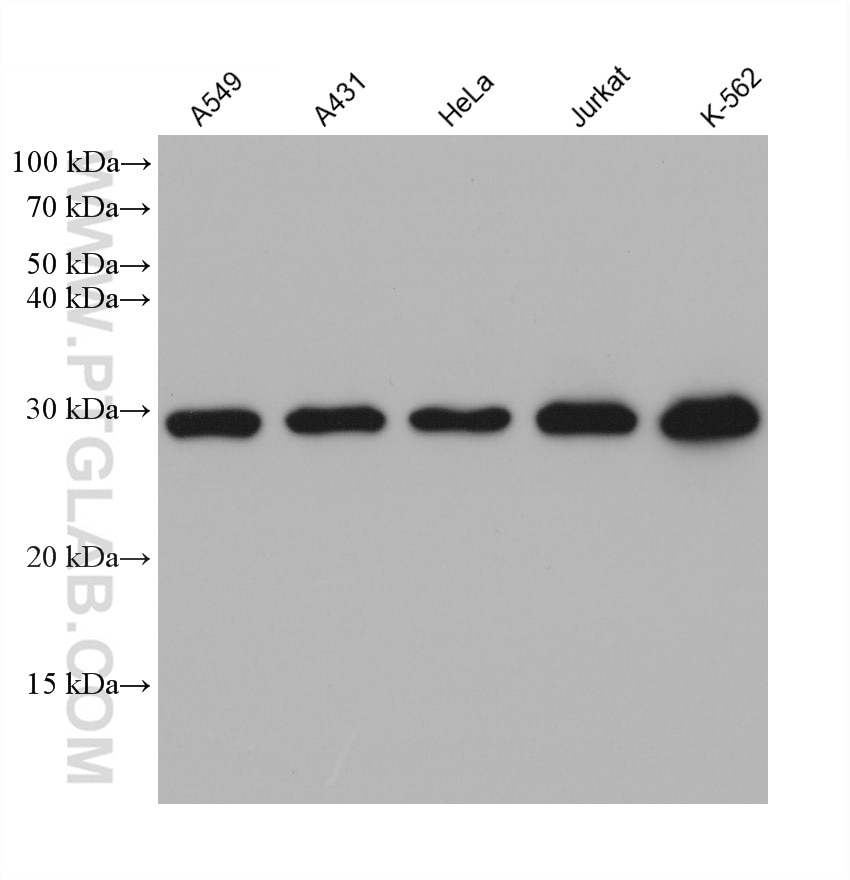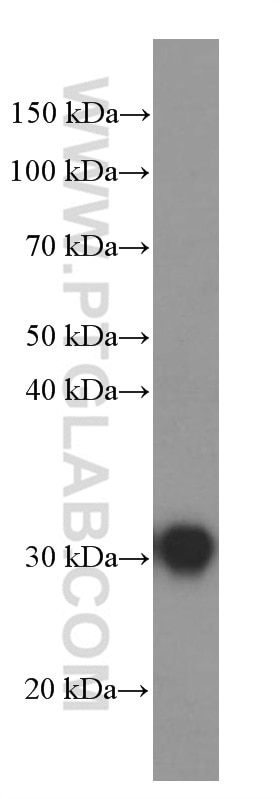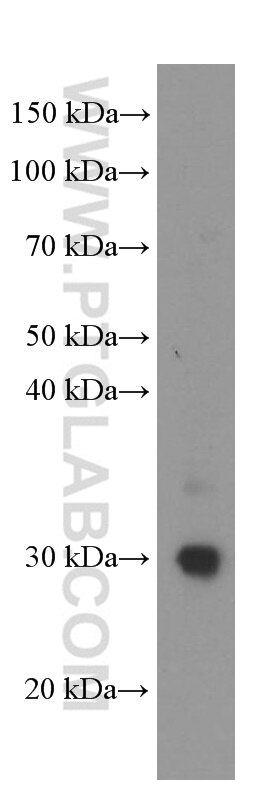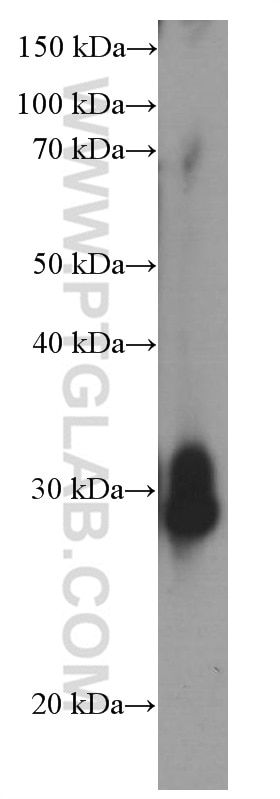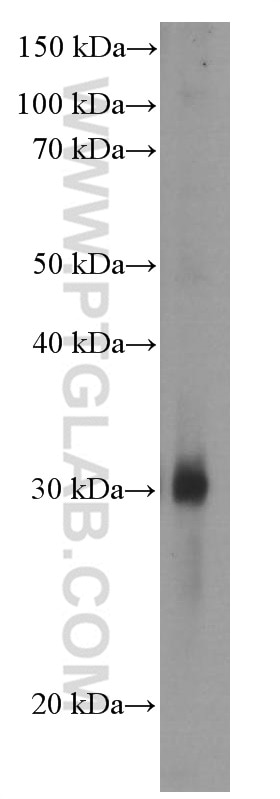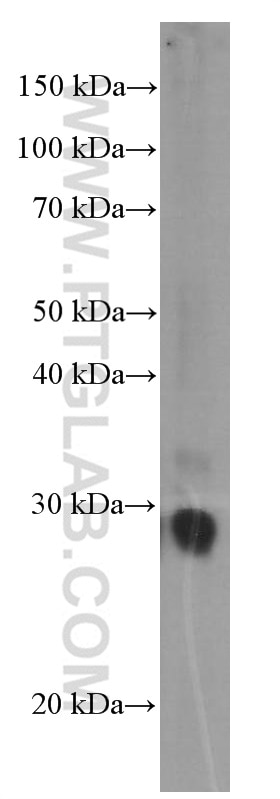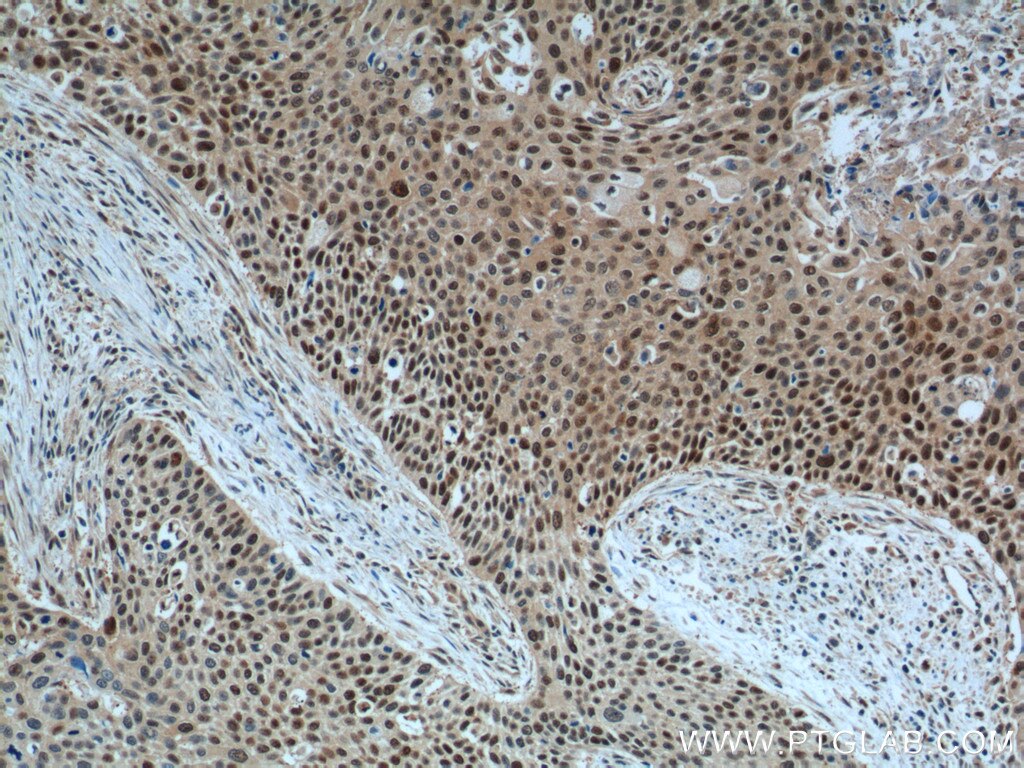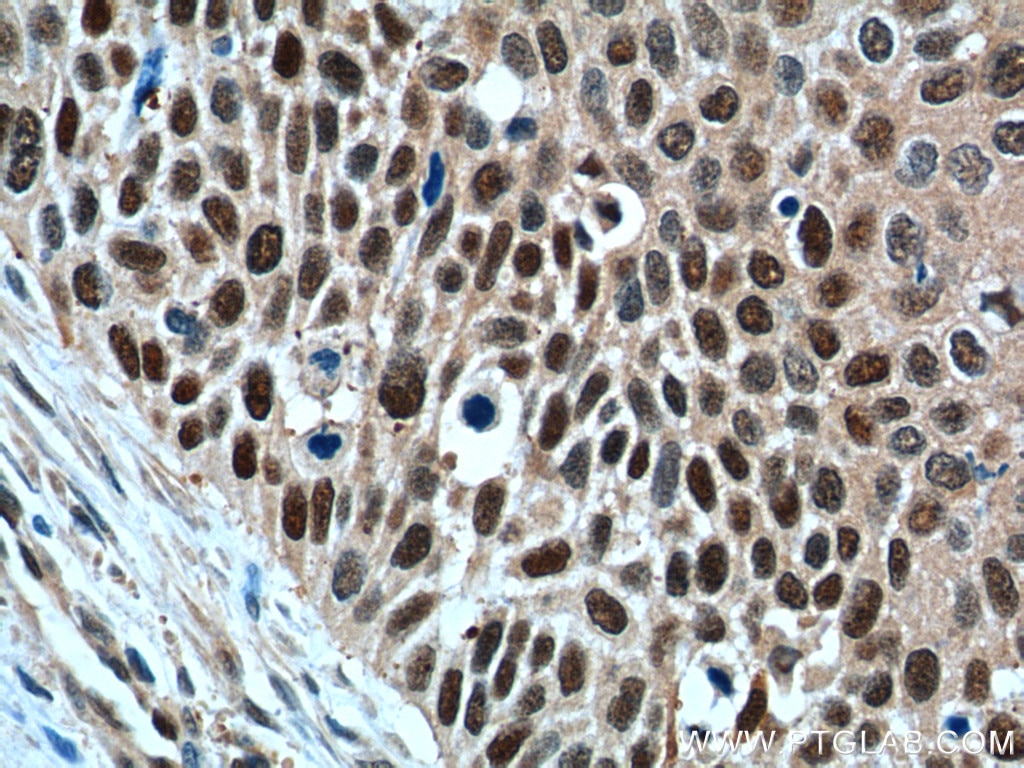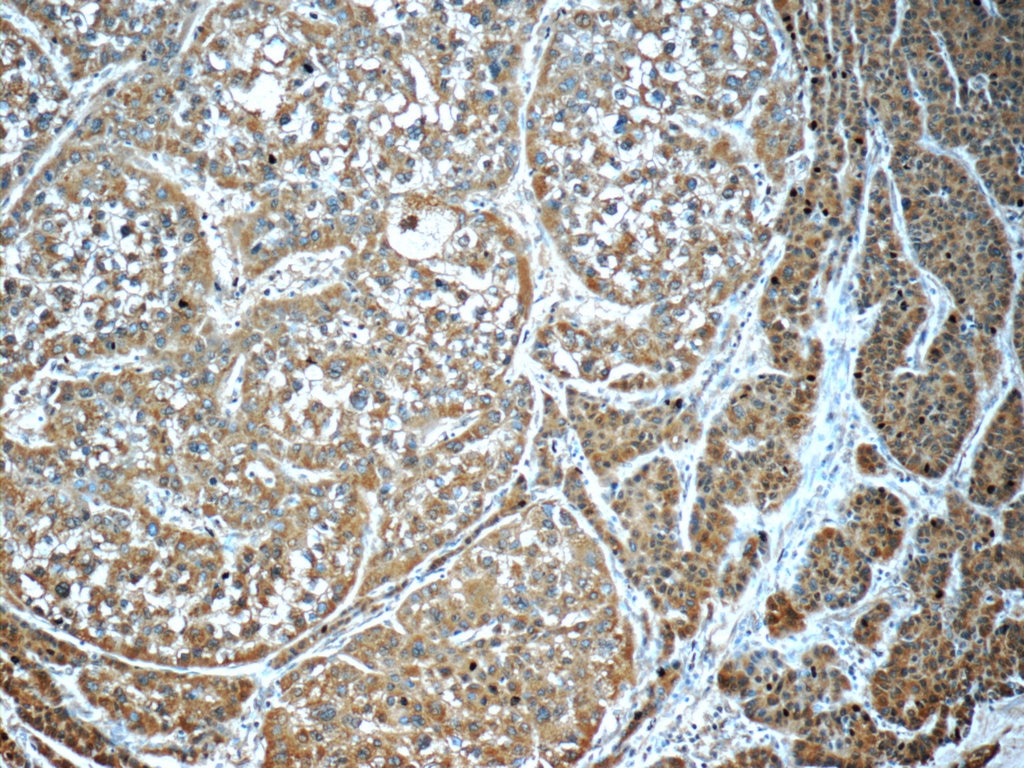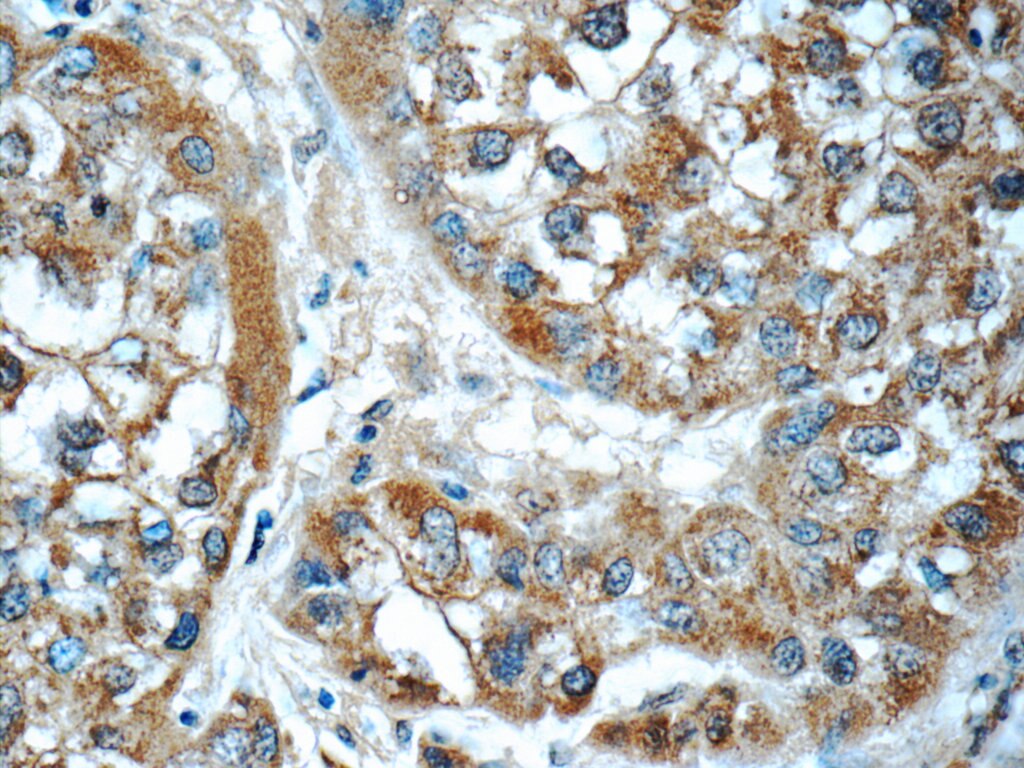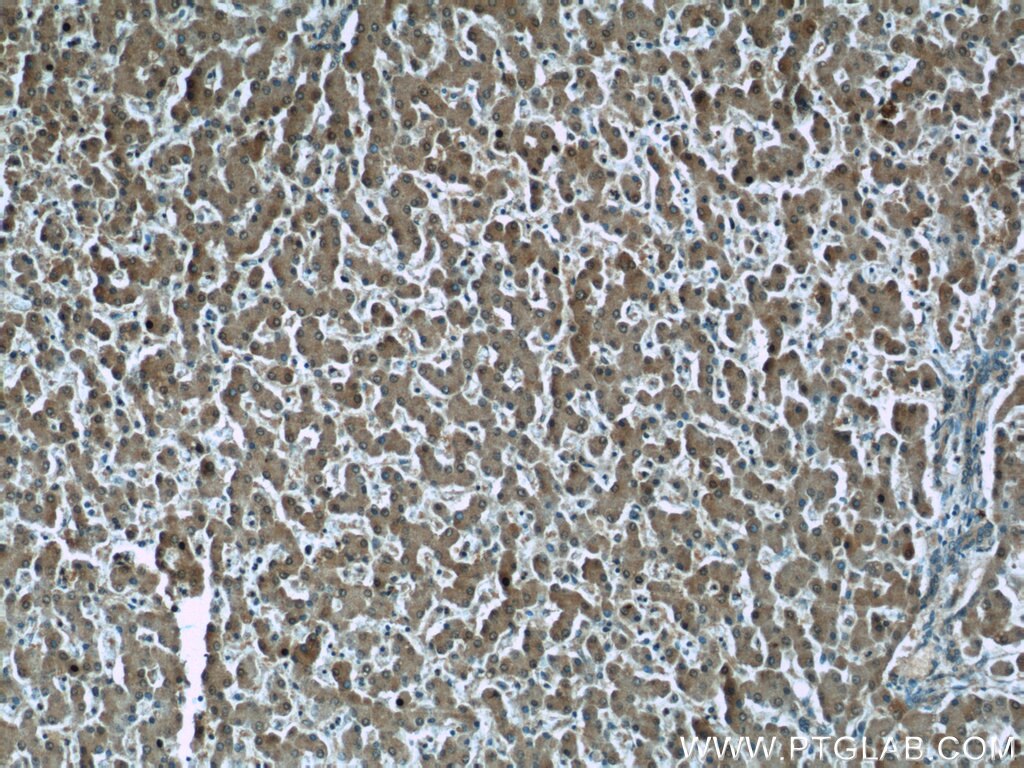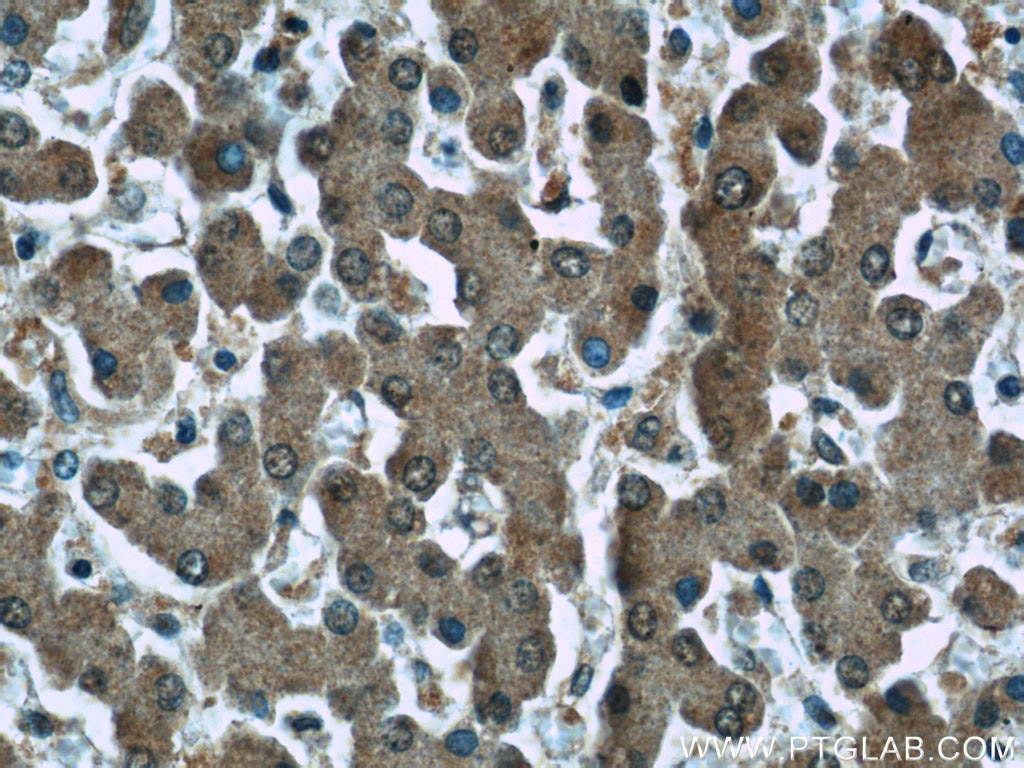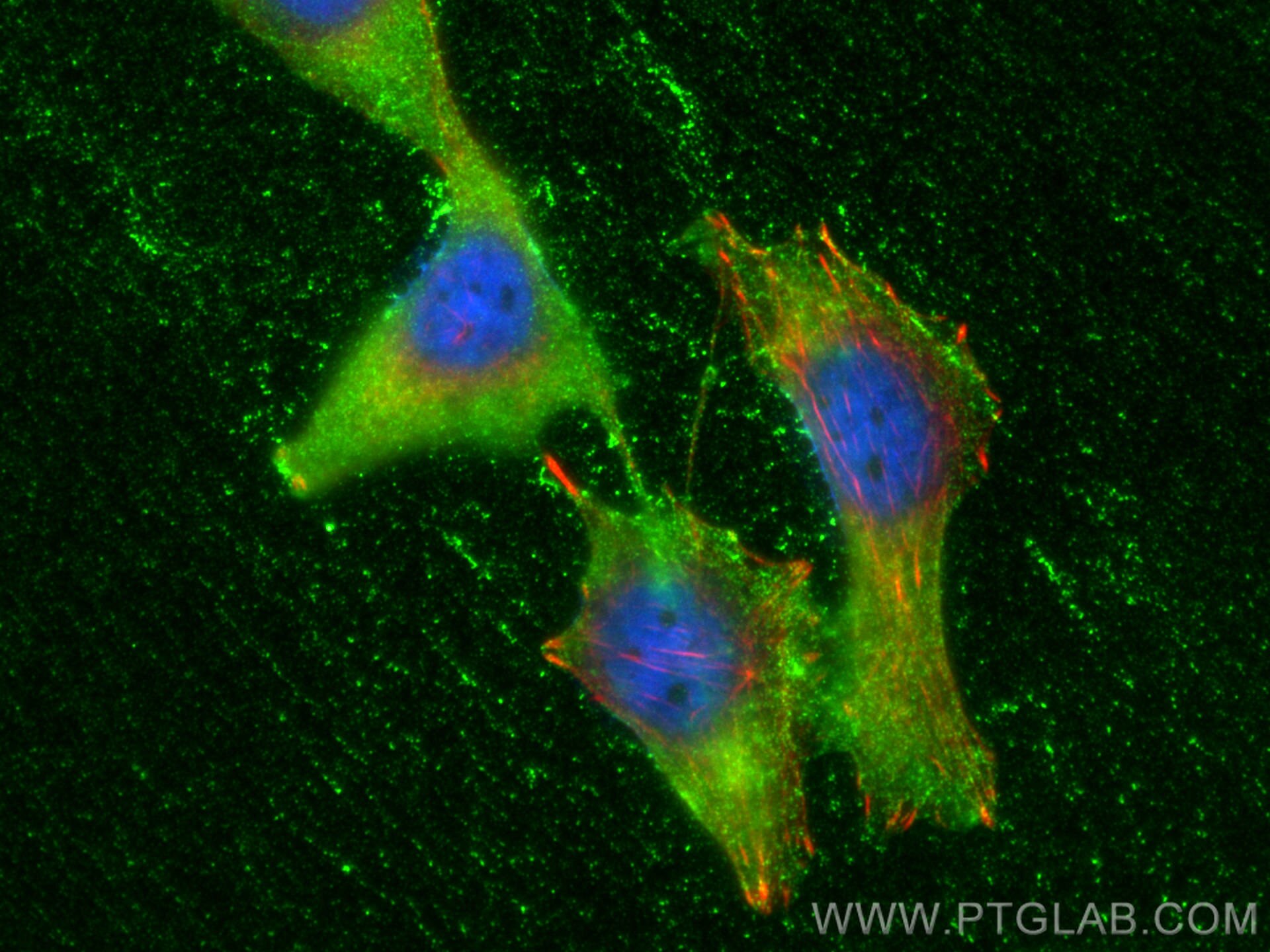Tested Applications
| Positive WB detected in | A549 cells, human heart tissue, U-937 cells, Raji cells, ROS1728 cells, NIH/3T3 cells, A431 cells, HeLa cells, Jurkat cells, K-562 cells |
| Positive IHC detected in | human oesophagus cancer tissue, human liver tissue, human liver cancer tissue Note: suggested antigen retrieval with TE buffer pH 9.0; (*) Alternatively, antigen retrieval may be performed with citrate buffer pH 6.0 |
| Positive IF/ICC detected in | PC-3 cells |
Recommended dilution
| Application | Dilution |
|---|---|
| Western Blot (WB) | WB : 1:5000-1:50000 |
| Immunohistochemistry (IHC) | IHC : 1:50-1:500 |
| Immunofluorescence (IF)/ICC | IF/ICC : 1:400-1:1600 |
| It is recommended that this reagent should be titrated in each testing system to obtain optimal results. | |
| Sample-dependent, Check data in validation data gallery. | |
Published Applications
| WB | See 1 publications below |
Product Information
60150-2-Ig targets GSTO1 in WB, IHC, IF/ICC, ELISA applications and shows reactivity with human, mouse, rat samples.
| Tested Reactivity | human, mouse, rat |
| Cited Reactivity | mouse |
| Host / Isotype | Mouse / IgG1 |
| Class | Monoclonal |
| Type | Antibody |
| Immunogen |
CatNo: Ag7199 Product name: Recombinant human GSTO1 protein Source: e coli.-derived, PGEX-4T Tag: GST Domain: 1-241 aa of BC000127 Sequence: MSGESARSLGKGSAPPGPVPEGSIRIYSMRFCPFAERTRLVLKAKGIRHEVININLKNKPEWFFKKNPFGLVPVLENSQGQLIYESAITCEYLDEAYPGKKLLPDDPYEKACQKMILELFSKVPSLVGSFIRSQNKEDYAGLKEEFRKEFTKLEEVLTNKKTTFFGGNSISMIDYLIWPWFERLEAMKLNECVDHTPKLKLWMAAMKEDPTVSALLTSEKDWQGFLELYLQNSPEACDYGL Predict reactive species |
| Full Name | glutathione S-transferase omega 1 |
| Calculated Molecular Weight | 28 kDa |
| Observed Molecular Weight | 27-30 kDa |
| GenBank Accession Number | BC000127 |
| Gene Symbol | GSTO1 |
| Gene ID (NCBI) | 9446 |
| RRID | AB_10644447 |
| Conjugate | Unconjugated |
| Form | Liquid |
| Purification Method | Protein G purification |
| UNIPROT ID | P78417 |
| Storage Buffer | PBS with 0.02% sodium azide and 50% glycerol, pH 7.3. |
| Storage Conditions | Store at -20°C. Stable for one year after shipment. Aliquoting is unnecessary for -20oC storage. 20ul sizes contain 0.1% BSA. |
Background Information
Glutathione-S-transferase omega 1 (GSTO1) belongs to a new subfamily of GSTs and is the rate limiting enzyme for biotransformation of inorganic arsenic, environmental carcinogen. Expression of GSTO1-1 was abundant in a wide range of normal tissues, particularly liver, macrophages, glial cells, and endocrine cells.
Protocols
| Product Specific Protocols | |
|---|---|
| WB protocol for GSTO1 antibody 60150-2-Ig | Download protocol |
| IF protocol for GSTO1 antibody 60150-2-Ig | Download protocol |
| IHC protocol for GSTO1 antibody 60150-2-Ig | Download protocol |
| Standard Protocols | |
|---|---|
| Click here to view our Standard Protocols |

